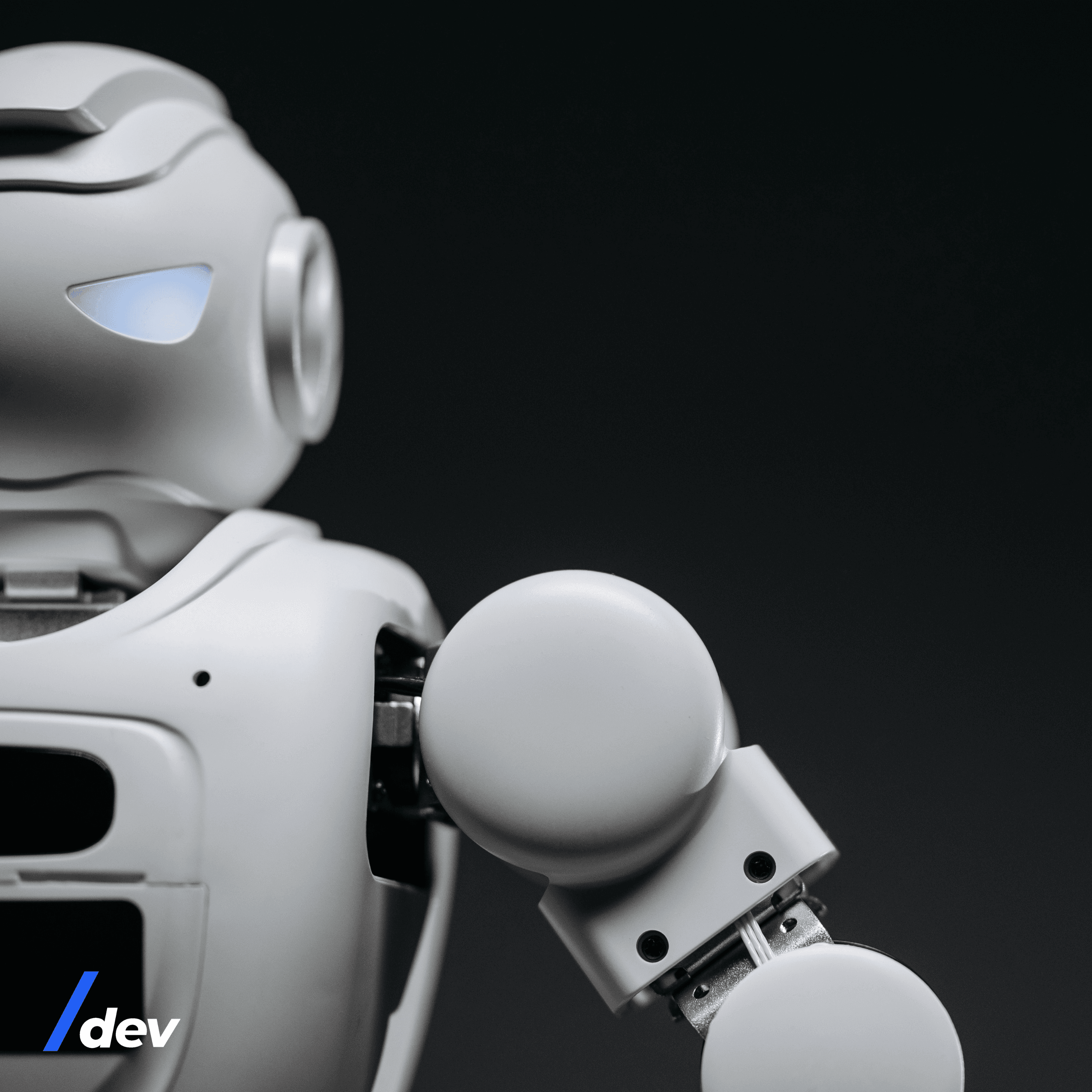Software Services
For Companies
For Developers
Products
Portfolio
Build With Us
Build With Us
Get Senior Engineers Straight To Your Inbox

Every month we send out our top new engineers in our network who are looking for work, be the first to get informed when top engineers become available

At Slashdev, we connect top-tier software engineers with innovative companies. Our network includes the most talented developers worldwide, carefully vetted to ensure exceptional quality and reliability.
Build With Us
The Future of Robotics: How AI is Shaping the Field of Robotics/


Introduction
Artificial Intelligence (AI) and robotics have become increasingly intertwined, revolutionizing various industries and transforming the way we interact with technology. In recent years, advancements in AI have propelled the field of robotics to new heights, enabling robots to perceive and navigate their environments, interact with humans, and perform complex tasks autonomously. This article explores the future of robotics and how AI is shaping the field, showcasing the potential applications, benefits, and challenges that lie ahead.
Intelligent Robotics

Perception and Sensing
AI algorithms enable robots to perceive and interpret their surroundings using advanced sensors, cameras, and machine vision techniques. This allows robots to navigate in dynamic environments, recognize objects, and adapt their behaviors accordingly. AI-powered perception systems enable robots to interact with their environment and humans more effectively and safely.
Autonomous Navigation
Through the fusion of AI and robotics, autonomous navigation has become a reality. Robots equipped with AI algorithms can navigate complex environments, avoid obstacles, and plan optimal paths. This has wide-ranging applications, from autonomous drones and self-driving cars to warehouse robots and healthcare assistants, enhancing efficiency and safety across various sectors.
Human-Robot Interaction
Natural Language Processing and Gesture Recognition
Advancements in natural language processing and gesture recognition have enabled robots to understand and respond to human commands and gestures. AI-powered robots can engage in conversations, follow instructions, and provide assistance, making them valuable companions in healthcare, customer service, and home environments.
Social Robotics

AI plays a crucial role in developing socially intelligent robots capable of understanding human emotions, expressions, and social cues. These robots can provide companionship, assist with therapy and rehabilitation, and serve as educational tools. Social robotics opens up new possibilities for human-robot collaboration and interaction.
Collaborative Robotics
Cobots
Collaborative robots, or cobots, are designed to work alongside humans in shared workspaces, enhancing productivity and safety. AI algorithms enable cobots to understand human intentions, adapt to changing tasks, and perform collaborative actions. This collaboration between humans and robots opens up new avenues for automation in industries such as manufacturing, logistics, and healthcare.
Robot Swarm
AI enables the coordination and cooperation of large groups of robots, known as robot swarms. These swarms can accomplish complex tasks by leveraging collective intelligence, distributed algorithms, and swarm behavior. From search and rescue missions to environmental monitoring, robot swarms offer scalable and efficient solutions to challenging problems.
Ethical Considerations and Challenges
Job Displacement and Workforce Skills
As robotics and AI continue to advance, concerns arise about job displacement and the need for reskilling the workforce. Society must address these challenges by investing in education and providing opportunities for individuals to adapt to the changing job landscape.
Ethical and Legal Frameworks
The increasing integration of AI and robotics raises ethical considerations, such as accountability, transparency, and the impact of autonomous systems on human lives. Establishing ethical and legal frameworks is crucial to ensure the responsible development and deployment of AI-powered robots.
Conclusion
The future of robotics holds immense potential, thanks to the synergy between AI and robotics. Intelligent robots equipped with AI algorithms are transforming industries, improving productivity, and enabling new applications across sectors. As the field progresses, it is essential to address ethical concerns, foster collaboration between humans and robots, and develop frameworks that ensure the responsible and beneficial use of AI in robotics. The future is exciting, and AI-powered robots will continue to shape our world in remarkable ways. To explore more about the intersection of AI and robotics, visit slashdev.io.

